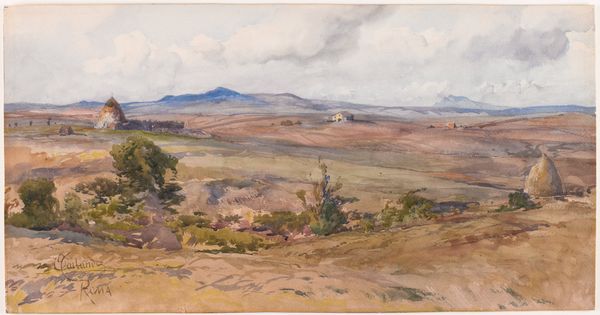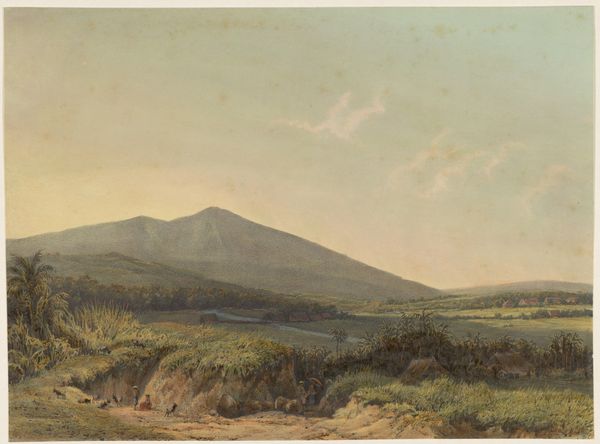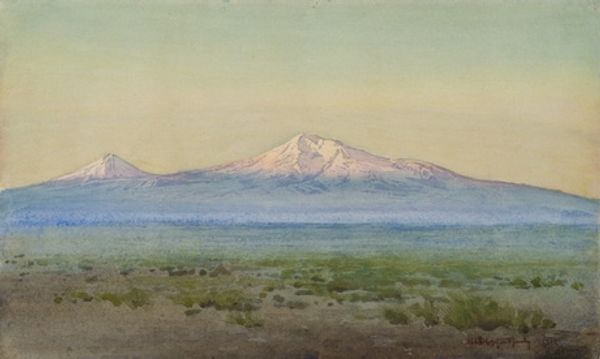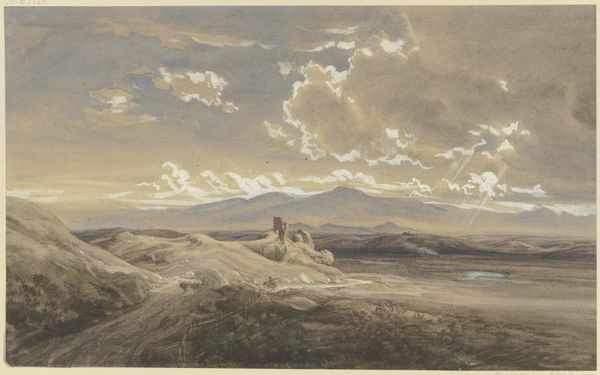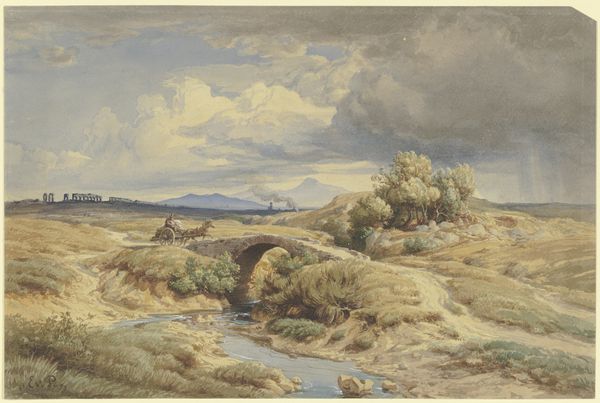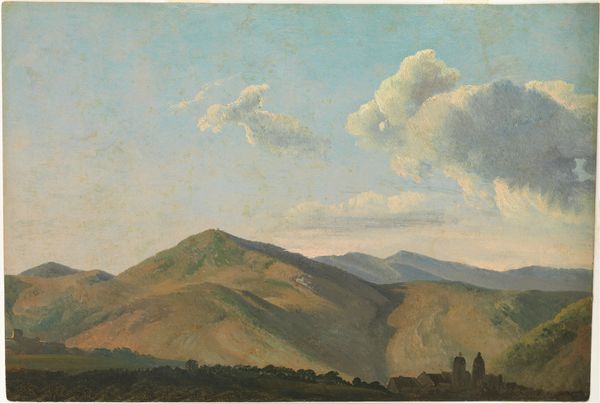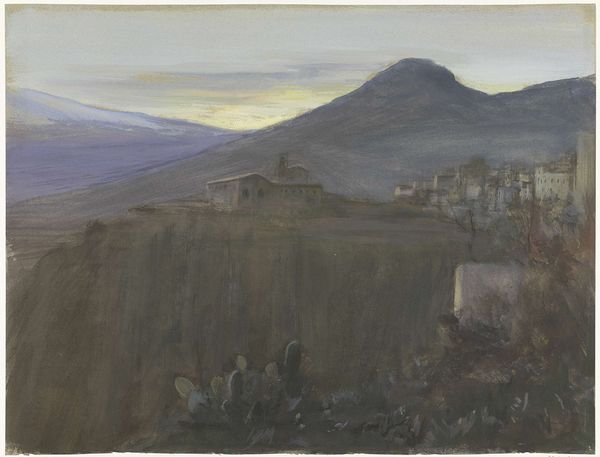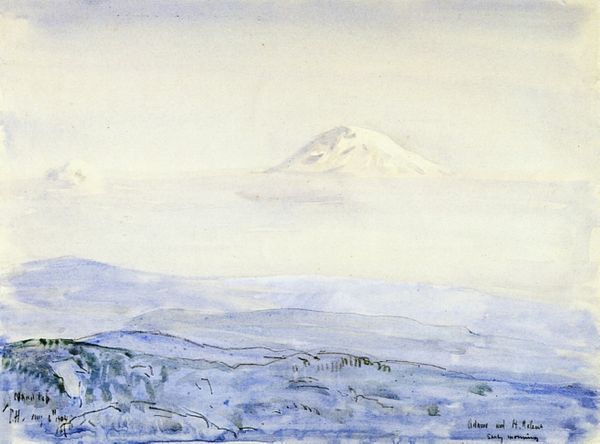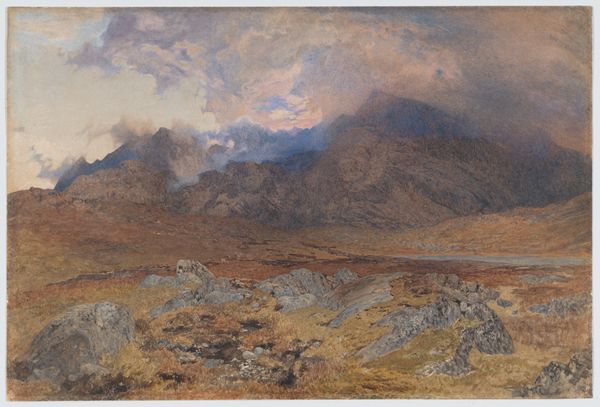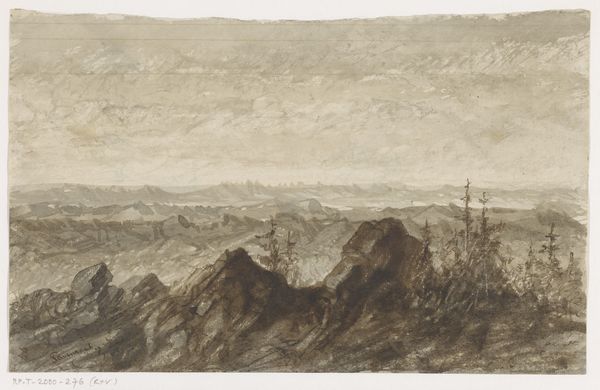
drawing, painting, plein-air, watercolor
#
drawing
#
painting
#
plein-air
#
landscape
#
oil painting
#
watercolor
#
romanticism
#
mountain
#
watercolour illustration
#
watercolor
Dimensions: 12 1/4 x 19 in. (31.1 x 48.3 cm)
Copyright: Public Domain
Editor: So, this is "Catania and Mount Etna," a watercolor and oil on paper created in 1847 by Edward Lear. The contrast between the dark, rugged foreground and the serene, distant mountain creates such a dramatic mood! What symbols and cultural layers are at play here? Curator: It’s quite striking, isn’t it? Think of Mount Etna itself: a powerful, almost divine presence in the Sicilian landscape. Volcanoes often carry layered cultural meanings – creation and destruction, beauty and terror, fertility and desolation, but in this particular view what does it stand for? Editor: Power, definitely, maybe also endurance? Catania has obviously survived its share of eruptions! Curator: Indeed! Consider the foreground – the volcanic rock. Those shapes aren't random. Rocks are building blocks and often appear to imply steadfastness, something foundational that has weathered much erosion in this region known for volatility. Does this interplay resonate in the depiction of Catania? Editor: I see what you mean. The town seems almost nestled, protected by both the mountain and the foreground, implying resilience, and maybe faith, as a way of life? Curator: Precisely. The snow-capped peak touches the sky, doesn't it? So that natural wonder acts like an anchor between this earthly space and whatever realm exists beyond what is observable. A silent force. And what could it possibly represent? Editor: A conduit? I guess, linking the groundedness of human experience with something, a bigger unknown, which gives me a new appreciation for the scene’s depth. Thank you! Curator: My pleasure! Seeing the connections helps us appreciate the landscape tradition itself – it's not just scenery, but also cultural memory etched in place.
Comments
No comments
Be the first to comment and join the conversation on the ultimate creative platform.
